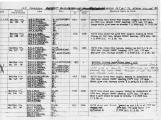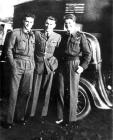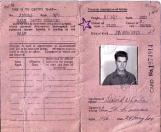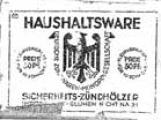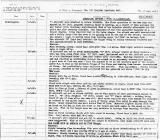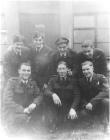2
Dave DaleDale took his basic training in Edmonton, Alberta. Fearing that the war would be over before he got overseas, he decided to train as a bomb aimer. The bomb aimer course was twelve weeks long, shorter than the courses required of other aircrew members.
He finished his training and received his wings in 1943. For a period of time he was stationed in Regina and in 1944, he was sent to Montreal. From there his wish would come true. His next posting was overseas. He arrived at Bournemouth, England on June, 6, 1944, D-Day!
Once in England, Dale was "crewed up" with pilot, navigator, and gunners; seven in total. Now came more training! Flying in Wellington bombers they took practice runs dropping bombs on targets in the seas and ocean nearby. Dave flew his first real mission, a successful one, on January 2, 1945.
Three days later on January 5, 1945, at approximately 1900 hours disaster struck. Dale, flying in only his second mission, was nestled in a Halifax bomber headed for Hanover. The squadron was facing particularly severe enemy anti-aircraft fire that night. Suddenly a shell struck the starboard engine of the plane. Within ten seconds of being hit the engine blew and the plane was sent into a spin. Dale, sitting up front, was hurtled out of the nose of the plane!
Dale's survival involved some luck! On the advice of an Aussie airman from another crew, he had positioned himself in the nose of the plane. His chute was partly strapped on and he was sitting on it to protect his "private parts." When he was thrown from the plane his chute went with him. Initially he passed out, however, while tumbling through the air he came to, in time to secure and deploy his chute. Later he would learn that only he and the pilot, flying officer Bergman, survived. The other five either died from the explosion or went down with the plane. He would also learn that in total thirty-three planes out of the two hundred and fifty that set out from Britain that night had been shot down.
Both he and Bergman survived the landing. Dale hit the snow covered ground on his backside damaging a lower vertebrae and Bergman landed in a tree. Eventually, they were captured by German soldiers. Dave Dale would spend the next few months, from January to May, in German prisoner of war camps. Initially he was taken to Nuremberg and later moved to a camp near Frankfurt. Needless to say conditions in the camps left a lot to be desired. What he missed most was a decent meal. He can remember being hungry all the time. Still he considered himself fortunate, as his stay lasted only a few months, while others had been there from the onset of the war. In May, with the fall of Germany, Dave Dale would be liberated by American soldiers. He was taken to an American camp in Nancy, France and from there back to Britain. Now that the war in Europe was over, he returned to Canada.
Upon his discharge and his return to Vancouver, Dave resumed his studies. He once again enrolled in UBC, this time, in the faculty of commerce. It would be at UBC that he would meet his future wife, Nancy. In 1949, Dave and Nancy would marry and Dave would begin a career in the insurance business. In 1963, after working a number of years in both Vancouver and Toronto they relocated to Grand Forks, B.C. where they raised their five children. They successfully ran an insurance office and travel agency. Here they would spend their retirement years where Dave would pursue his passion for golf. In 1998, he won the Canadian Super Seniors Golf Championship. There is no doubt that Dave Dale has had a truly remarkable life, a life that could have easily been snuffed out that January night over the skies of Germany.
4
"And finishing there, I then went to Prince of Wales High School which is a fairly small school in Vancouver. Well, I was attending a physics lecture and it was going right over my head, and going over the head of the guy beside me, and we said let's go down and enlist, so we went down and joined the Air Force."11
"We were on our second trip to Hanover and we were just coming in on the target. I was the bomb aimer getting ready, could see where we were suppose to drop the bombs, just getting ready when the plane got hit, one of the engines went on fire, and we eventually went into a dive, and the plane blew up, and I got blown out of the nose. My skipper, the pilot, he had his seat pack on and he got blown out of the top."12
British declassified document indicating the night Dave Dale's aircraft was shot down.5 January 1945
Near Hanover, Germany
